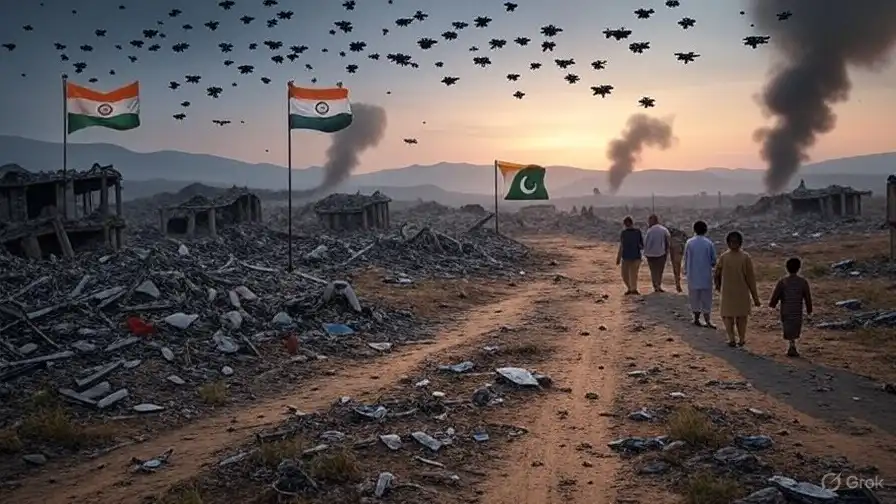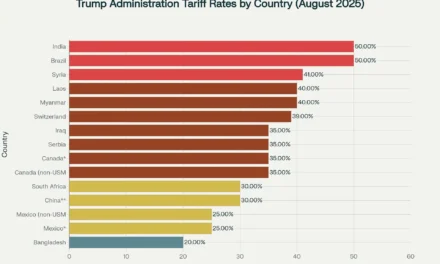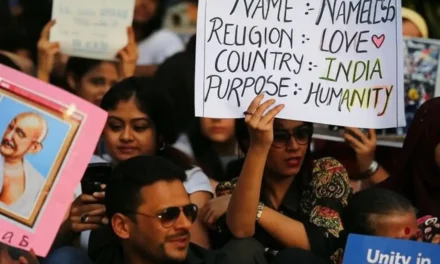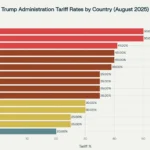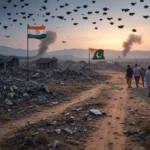The four-day military confrontation of India vs Pakistan 2025 War begun on May 7, 2025. It stands as one of the most devastating and technologically advanced conflicts between the nuclear-armed neighbors since their independence. Triggered by the Pahalgam terrorist attack that claimed 26 lives on April 22, 2025, this confrontation marked several military firsts and resulted in unprecedented casualties, infrastructure damage, and economic losses totaling over $100 billion. The conflict showcased modern warfare’s evolution, featuring the first large-scale drone battles between nuclear powers, advanced missile systems, and extensive cyber-information warfare campaigns.
Background and Escalation Timeline
The Trigger: Pahalgam Terror Attack
The crisis began with the deadliest terrorist attack in Kashmir since 2008, when militants struck tourists in Pahalgam on April 22, 2025. The attack killed 26 people, including 25 Hindu tourists and one local Muslim, while injuring over 20 others. The Resistance Front (TRF), an offshoot of Pakistan-backed Lashkar-e-Taiba, initially claimed responsibility but later retracted the statement.
India’s investigation revealed sophisticated Chinese technology in the attackers’ possession, including BeiDou-enabled navigation devices and Huawei Mate 60 Pro smartphones with satellite connectivity, allowing communication through China’s Tiantong-1 network. This discovery suggested advanced technological support for the terrorist operation.
Diplomatic Breakdown
Following the attack, India implemented sweeping diplomatic and strategic countermeasures. These included downgrading diplomatic relations with Pakistan, expelling Pakistani military advisors from the High Commission in New Delhi, closing critical border crossings, suspending the Indus Waters Treaty, and withdrawing Indian staff from Islamabad. Pakistan responded with trade restrictions, airspace closure, and suspension of the Shimla Agreement.
Military Escalation
Between April 24 and May 6, both countries engaged in preliminary skirmishes including cross-border firing and intermittent artillery shelling. The situation escalated dramatically when India launched Operation Sindoor on May 7, 2025, marking the beginning of the most intense fighting between the nations in decades.
Military Operations and Tactical Analysis
Operation Sindoor: India’s Strategic Response
India’s military campaign, codenamed Operation Sindoor, commenced in the early hours of May 7, 2025. The operation targeted nine sites across Pakistan and Pakistan-administered Kashmir (PoK), utilizing advanced precision weapons including:
- BrahMos supersonic cruise missiles – potentially marking their first combat use
- SCALP cruise missiles fired from Rafale fighter jets
- AASM Hammer precision-guided munitions
- Israeli SkyStriker loitering munitions
- M982 Excalibur artillery rounds
The initial strikes on May 7 targeted terrorist infrastructure of Jaish-e-Mohammed and Lashkar-e-Taiba. According to Indian sources, over 170 terrorists were killed in these strikes, with maximum damage inflicted on the Bahawalpur headquarters where Maulana Masood Azhar’s family suffered heavy casualties.
Pakistan’s Retaliation: Operation Bunyan-um-Marsoos
Pakistan’s military response, Operation Bunyan-um-Marsoos, launched on May 10, 2025, featured several advanced weapons systems:
- Fatah-I and Fatah-II ballistic missiles with ranges of 250-400 kilometers
- Chinese J-10C fighter jets equipped with PL-15 air-to-air missiles
- Massive drone swarms – over 350-400 drones deployed on May 7-8
- Turkish Asisguard Songar drones targeting 36 sites
Pakistan’s retaliation included massive mortar shelling of Poonch district in Jammu, described as the heaviest since the 1971 Indo-Pakistani war. The bombardment killed 16 civilians and destroyed over 60 homes, 31 schools, a Sikh temple, and Christian religious facilities.
Air Warfare and Aircraft Losses
The conflict witnessed unprecedented aerial combat with disputed aircraft loss figures. India acknowledged losing several fighter aircraft, with sources suggesting at least two and potentially more were downed. Pakistan initially claimed shooting down six Indian jets, later revised to five aircraft, including three Rafales, one MiG-29, and one Sukhoi.
India reportedly destroyed at least nine Pakistani aircraft, including six Pakistan Air Force fighter jets, two surveillance aircraft, and one C-130 Hercules transport aircraft[previous analysis]. The destruction also included ten armed drones in a single strike on a hangar housing Chinese-origin Wing Loong series UAVs[previous analysis].
Airbase Destruction Campaign
India’s Strategic Airbase Strikes: On the night of May 9-10, India launched approximately 15 BrahMos missiles targeting Pakistani airbases. The operation damaged 11 out of Pakistan’s 13 major airbases, including:
- Nur Khan Air Base, Rawalpindi – Pakistan’s crown jewel located 10km from Islamabad
- PAF Base Mushaf, Sargodha – Critical for housing JF-17, J-10, and F-16 fighter jets
- Bholari Air Base – Housing JF-17 Thunder and F-16 Fighting Falcon
- Shahbaz Air Base, Jacobabad – Located in northern Sindh Province
- Sukkur Air Base, Sindh – Strategic western border facility
High-resolution satellite imagery from Maxar Technologies confirmed extensive damage, showing collapsed hangar roofs, blast craters exceeding 15 meters in diameter, and charred vehicle clusters. The strikes destroyed approximately 20% of Pakistan’s air force infrastructure, with over 50 personnel killed including Squadron Leader Usman Yusuf at Bholari airbase.
Pakistan’s Confirmation: Pakistan Prime Minister Shehbaz Sharif publicly admitted the extent of damage, stating that BrahMos missiles struck “various provinces of Pakistan, including the airport in Rawalpindi”. Pakistan subsequently issued repair tenders between May 12-14 for damaged military bases in Rawalpindi, Risalpur, and Kallar Kahar.
Technological Warfare and Innovation
First Drone War Between Nuclear Powers
The May 2025 conflict marked the first drone battle between nuclear-armed nations. Pakistan deployed massive drone swarms as a cost-effective warfare tactic, sending over 600 drones during the conflict. On the night of May 7-8 alone, approximately 350-400 Turkish-supplied drones, including Byker Yiha Kamikaze and Asisguard Songar models, were launched against Indian targets.
India’s drone strategy centered on precision rather than overwhelming numbers, utilizing AI-enabled tactical platforms including:
- IAI Harop loitering munitions capable of hovering and assessing targets
- SkyStriker precision strike drones
- Indigenous kamikaze FPV drones developed by the Fleur-De-Lis Brigade
- Swarm drone systems for coordinated attacks
Chinese Technology in Pakistani Arsenal
The conflict served as a proving ground for Chinese military technology, with Pakistan functioning as a proxy platform for testing Chinese systems against Western-made Indian weapons. Key Chinese technologies deployed included:
- PL-15 air-to-air missiles guided remotely by Chinese experts using “fusion operations”
- HQ-9/HQ-16 SAM Systems and LY-80 & FM-90 air defense systems
- Wing Loong II drones and CH-4 unmanned combat aerial vehicles
- BeiDou navigation systems and Huawei satellite communication devices
U.S. military expert John Spencer noted that “Pakistan fought as a proxy force, dependent on Chinese hardware that was built for export, not for excellence,” while India demonstrated sovereignty with indigenously developed weapons.
Advanced Missile Systems
India’s Precision Weapons: The conflict marked several firsts for Indian weaponry:
- First combat use of BrahMos supersonic cruise missiles
- First operational deployment of SCALP-EG cruise missiles
- Rudram anti-radiation missiles for SEAD operations
- Akash and Akashteer missile defense systems
Pakistan’s Ballistic Response: Pakistan used conventionally armed short-range ballistic missiles for the first time against India:
- Fatah-I missiles with 150km range
- Fatah-II missiles with 400km range, one intercepted over Sirsa while targeting Delhi
Casualties and Human Cost
Military Personnel Losses
India’s Military Casualties:
- 8 military and paramilitary personnel killed
- 17 military personnel wounded[previous analysis]
- Several aircraft crew members among the casualties
Pakistan’s Military Casualties:
- 42-53 military personnel killed across various operations
- 6 airmen killed during Indian air strikes on May 10[previous analysis]
- Squadron Leader Usman Yusuf and 4 airmen killed at Bholari airbase
- 24 military personnel wounded[previous analysis]
Civilian Casualties
India’s Civilian Losses:
- 21 civilians killed, primarily in Poonch district
- 43 civilians wounded[previous analysis]
- 2 students killed when Pakistani shells struck near Christ School
- Multiple casualties at religious sites including a Sikh temple
Pakistan’s Civilian Losses:
- 31-40 civilians killed according to Pakistani sources
- 57 civilians wounded[previous analysis]
- 5 civilians killed at religious sites including Masjid Syedna Bilal and Masjid-e-Abbas[previous analysis]
- Child killed in mosque strike in Bahawalpur
Infrastructure and Social Impact
Educational Facilities: Pakistan reported 31 schools damaged or destroyed by Indian shelling, while hundreds of homes were reduced to rubble in border areas.
Religious Sites: Both sides suffered damage to places of worship, with mosques, temples, and churches targeted or caught in crossfire, highlighting the conflict’s sectarian dimensions.
Economic Impact and Financial Devastation
Direct Military Costs
India’s Expenditure: India’s military spending during the conflict ranged between ₹1,460 crore to ₹5,000 crore per day ($520 million to $1.78 billion). Over the four-day period, this translates to approximately ₹15,000 crore ($1.78 billion) in direct military costs.
Specific weapon costs included:
- BrahMos missiles: $2.5-5.6 million each
- Kamikaze drones: $500 per unit
- Precision strikes: $350,000 per target
Pakistan’s Expenditure: Pakistan’s daily losses were estimated at $180-600 million, with total war costs potentially exceeding $10-15 billion in a short period.
Economic Disruption and Market Impact
Stock Market Volatility: India’s benchmark equity indexes dropped by 0.5-0.6%, while the Nifty 50 Index fell by 1.8% within a week. Approximately $1.7 billion in foreign capital exited Indian bonds due to escalating risks.
Foreign Exchange: India’s foreign exchange reserves declined by $2.07 billion to $686.06 billion as of May 2, 2025. The rupee initially appreciated by 1% due to foreign inflows but later depreciated by 0.9% amid mounting tensions.
Trade and Infrastructure Disruption
Aviation Impact: The conflict led to cancellation of over 430 flights across 27 airports in northern and western India. Pakistani airspace was closed for 48 hours, with all flights cancelled. International carriers rerouted flights to avoid Pakistani airspace, causing longer travel times and delays.
Border Trade: Pakistan suspended bilateral trade with India, including critical cotton imports affecting India’s textile industry. The closure of the Attari-Wagah Integrated Check Post resulted in an estimated income loss of ₹7,013 crore over five years and unemployment for nearly 12,000 workers.
Sports and Entertainment: The Indian Premier League transferred matches and was eventually postponed due to the conflict. Similarly, Pakistan Super League matches were cancelled.
Comprehensive Economic Assessment
According to analysis by the Pakistan-based Institute for Policy Research (IPRI), India’s economy incurred at least $88.712 billion in realized losses over the four-day conflict. This modeling framework included:
- Fiscal balance-sheet pressures and budget deficit surge
- Lost output (GDP contraction) as tangible economic cost
- Non-tradable service sectors including tourism, civil aviation, and information campaigns
Combined economic losses for both countries were estimated at approximately $1 billion per hour during the 87-hour confrontation, with total economic impact reaching around $20 billion per day.
Humanitarian Crisis and Displacement
Population Displacement
Pakistan-Administered Kashmir: In Azad Jammu & Kashmir (AJK), over 3,100 people were displaced in Bagh, Haveli, and Muzaffarabad districts. Shelling damaged 139 houses, forcing families to seek shelter with relatives or in public schools designated as temporary camps.
Indian-Administered Kashmir: Significant displacement occurred in Poonch district, where Pakistani shelling forced families to flee on foot under fire. Many of the approximately 40,000 Poonch residents left for safer areas.
Humanitarian Needs
Primary Requirements: Displaced populations in AJK faced urgent needs for shelter, non-food items (NFIs), protection, and specialized medical support. Fuel shortages were reported in parts of AJK.
International Response: UN Secretary-General António Guterres expressed “deep concern” over rising tensions and underscored the need to avoid confrontation. The UN and international community called for de-escalation and humanitarian access.
Women’s Historic Role in Combat Operations
Breaking Military Glass Ceilings
Operation Sindoor marked a watershed moment for women’s participation in Indian military operations. For the first time, Indian women pilots played active combat roles in precision air missions. Defence Minister Rajnath Singh confirmed that “women pilots and other female soldiers played a crucial role in the effective action taken by India against terrorism”.
Ground Command Leadership: Two women colonels commanded air defense units during the conflict, marking their maiden live combat exposure. One led her AD unit at Pathankot in Punjab, while the other commanded at Suratgarh in Rajasthan. Both were the only women in their respective 800-soldier units.
Symbolic Leadership: The conflict briefings were led by two prominent women officers:
- Wing Commander Vyomika Singh: A distinguished helicopter pilot who announced India’s military preparedness
- Colonel Sofiya Qureshi: A decorated Corps of Signals officer who detailed the operation’s execution
This representation aligned with the operation’s name “Sindoor,” paying tribute to women who lost their husbands in the terror attack.
Information Warfare and Digital Battleground
Social Media Manipulation Campaign
The May 2025 conflict witnessed an unprecedented digital information war alongside military operations. A parallel battle unfolded across social media platforms where misinformation and disinformation played crucial roles in shaping public perception and escalating tensions.
Scale of Misinformation: Analysis by the Center for the Study of Organized Hate (CSOH) examined 1,200 posts across social media platforms, finding that misinformation metastasized rather than simply circulated. On X (formerly Twitter), out of 437 posts containing misinformation, only 73 had community notes.
Pakistani Digital Strategy
Strategic Timing: Pakistan lifted its year-long ban on X precisely as tensions escalated with India, enabling Islamabad to “participate in the narrative war”. This move was deliberate and strategic according to Pakistani Senate committee minutes.
Propaganda Techniques: Pakistani social media campaigns included:
- Recycled footage from other conflicts passed off as current events
- Old images misrepresented to create false narratives
- Game footage falsely portraying Pakistani military success
- AI-generated deepfakes of political leaders
Indian Counter-Information Efforts
Government Response: India’s Press Information Bureau (PIB) Fact Check division stepped in to debunk dozens of viral claims, including:
- Videos from Lebanon’s 2020 explosion shared as missile strikes on Indian cities
- Drone footage from Jalandhar fires framed as attacks
- Recycled images from other conflict zones passed off as Indian casualties
Media Manipulation: The disinformation feedback loop involved mainstream news media reporting false claims verbatim, giving misinformation not just reach but credibility.
International Diplomatic Response
U.S. Mediation Efforts
The United States played a crucial role in de-escalating the crisis through high-level diplomatic intervention. U.S. Vice President JD Vance and Secretary of State Marco Rubio held extensive correspondence with both Indian and Pakistani officials during negotiations. The diplomatic pressure culminated in a ceasefire agreement on May 10, 2025.
Global Concern Over Nuclear Escalation
Nuclear Command Authority: Following India’s strikes in Rawalpindi on May 9, Pakistan reportedly called an emergency meeting of the National Command Authority (NCA), the country’s highest strategic body responsible for nuclear arsenal decisions. Though later denied by Pakistan’s Defence Minister, the incident highlighted how close the conflict came to potential nuclear escalation.
International Warnings: The conflict triggered global concern about nuclear risks between two armed neighbors possessing 400-500 nuclear weapons by 2025. Research from Rutgers University warned that a nuclear conflict could result in 50-125 million immediate deaths and global climate catastrophe.
Regional and Global Reactions
China’s Position: China called for de-escalation and advocated for an independent investigation into the Pahalgam attack. Beijing’s support for Pakistan through advanced military technology raised concerns about proxy warfare dynamics.
Middle Eastern Support: Pakistan gained measured international support, especially from China and Middle Eastern states, due to its strategic restraint and international messaging.
India’s Diplomatic Offensive: On May 17, India announced a global outreach with seven all-party delegations visiting UN Security Council members and EU countries to communicate its zero-tolerance terrorism message.
Nuclear Implications and Strategic Stability
Threshold Breach Concerns
The May 2025 conflict brought India and Pakistan dangerously close to nuclear threshold breach. Pakistan’s reported consideration of National Command Authority meeting indicated how quickly conventional conflict could escalate to nuclear discussions.
Academic Predictions Realized
A chilling 2019 study published by Routledge had predicted a nuclear conflict between India and Pakistan in 2025, sparked by a high-casualty terror attack. The study theorized escalation patterns remarkably similar to actual events:
- Major terrorist attack triggering military mobilization
- Conventional conflict escalation
- Pakistani resort to tactical nuclear weapons fearing defeat
Global Consequences of Nuclear War
Research indicates that an India-Pakistan nuclear conflict would affect the entire world, not just South Asia:
- 16-36 million tons of soot released into the upper atmosphere
- Global temperature drop of 2-5°C
- Sunlight reduction of 20-35%
- Precipitation decline of 15-30%
- Global food production collapse threatening mass starvation
Technological Innovation and Future Warfare
Drone Technology Evolution
The conflict marked a new chapter in the arms race as both countries recognized drone effectiveness. India announced investment of $470 million in drone production over 1-2 years, three times higher than pre-conflict budgets. The government approved emergency purchases of ₹2,000 crore worth of Remotely Piloted Aerial Vehicles (RPAVs).
China’s Massive Drone Force: Reports indicate China is building a drone force estimated at one million units, while Pakistan acquired over 50,000 drones from China and Turkey.
Lessons from Ukraine Integration
The conflict drew lessons from the Ukraine-Russia war, particularly the high level of drone integration in modern warfare. The primacy of aerial theater ensured the geographical extent far exceeded the 1999 Kargil war.
Indigenous vs. Foreign Dependence
The conflict highlighted the strategic value of indigenous weapons development. India’s Make in India and Atmanirbhar Bharat programs proved effective against Chinese-supplied Pakistani systems. The battle demonstrated that “India fought as a sovereign power, wielding precision tools it designed, built and deployed with unmatched battlefield control”.
Medical and Psychological Impact
Healthcare System Strain
Border hospitals operated under emergency conditions throughout the conflict. Medical facilities in both countries faced challenges treating blast injuries, burns, and trauma cases from the intense bombardment.
Psychological Trauma
The conflict resulted in widespread panic and emotional distress among affected communities. Children in border areas experienced particular trauma from constant shelling and displacement.
Educational Disruption: School closures across conflict zones affected thousands of students, with 31 schools destroyed in Pakistan alone. The psychological impact on children witnessing violence and destruction requires long-term mental health support.
Religious and Cultural Dimensions
Targeting of Religious Sites
Both sides suffered damage to places of worship, highlighting concerning trends in modern warfare targeting cultural and religious identity. The destruction included:
- Mosques in Pakistan struck by Indian missiles
- Sikh temple (gurdwara) in Poonch damaged by Pakistani shelling
- Christian facilities including damage to Christ School compound
Sectarian Implications
The conflict’s religious dimensions were amplified through social media campaigns that framed the confrontation as civilizational warfare between Hindus and Muslims. Online discourse increasingly treated Indian Muslims as “enemies within,” collapsing distinctions between external enemies and internal citizens.
Environmental and Agricultural Impact
Agricultural Destruction
Cross-border shelling devastated agricultural areas along the Line of Control and international border. Farmers in border regions lost crops due to artillery fire and were unable to tend fields due to security concerns.
Environmental Contamination
Military operations involving explosives and fuel posed environmental risks to border ecosystems. The destruction of infrastructure led to potential contamination of water sources and soil.
Recovery and Reconstruction Challenges
Infrastructure Rebuilding
Pakistan’s Reconstruction Needs: Pakistan issued multiple repair tenders between May 12-14 for damaged military installations. The scale of airbase damage requires extensive reconstruction of:
- Runway repairs and resurfacing
- Hangar reconstruction
- Air defense system replacement
- Communication infrastructure restoration
India’s Border Area Recovery: Indian border areas, particularly Poonch district, require:
- Home reconstruction for displaced families
- School rebuilding and educational infrastructure
- Religious site restoration
- Healthcare facility enhancement
Economic Recovery Timeline
Long-term Economic Impact: The conflict’s economic ramifications extend beyond immediate costs. Recovery from the $88.7 billion in realized losses requires sustained economic policy adjustments. The disruption to trade relationships, investment confidence, and regional integration poses long-term challenges.
Lessons Learned and Strategic Implications
Military Technology Assessment
Drone Warfare Effectiveness: The conflict demonstrated that small-scale drone attacks can target objectives without endangering personnel or triggering uncontrolled escalation. This lesson is driving increased investment in drone technology by both nations.
Precision vs. Quantity: India’s strategy of precision strikes proved more effective than Pakistan’s mass drone deployment approach. Quality and accuracy of weapons systems showed greater strategic value than overwhelming numbers.
Nuclear Deterrence Evolution
Erosion of Deterrence: The conflict exposed the erosion of nuclear deterrence in the face of proxy warfare and political brinkmanship. The ease with which conventional conflict escalated toward nuclear consideration raises serious questions about South Asian strategic stability.
Information Warfare Revolution
Digital Battleground Importance: The parallel information war demonstrated that modern conflicts extend beyond physical battlefields into digital spaces. Future military planning must account for social media manipulation and counter-disinformation strategies.
Future Implications and Preparedness
Arms Race Acceleration
The conflict has triggered a new phase in the India-Pakistan arms race, particularly in drone technology and air defense systems. Both nations are investing heavily in:
- Advanced drone fleets and counter-drone systems
- Missile defense capabilities
- Cyber warfare capabilities
- Space-based assets for intelligence and communication
Regional Security Architecture
Need for New Frameworks: The intensity and technological sophistication of the May 2025 conflict underscores the need for updated regional security frameworks. Traditional confidence-building measures appear inadequate for preventing rapid escalation in the age of precision weapons and information warfare.
International Oversight Requirements
Enhanced Monitoring: The conflict demonstrates the need for enhanced international monitoring and rapid diplomatic intervention capabilities. The speed with which events escalated from terrorist attack to potential nuclear confrontation requires more sophisticated early warning systems.
Conclusion: A Watershed Moment in South Asian Security
The May 2025 India-Pakistan conflict represents a watershed moment in South Asian security dynamics and modern warfare evolution. With over 130 total casualties, billions in economic damage, and thousands displaced, the four-day confrontation demonstrated how quickly regional tensions can escalate to existential threats in the nuclear age[previous analysis].
Key Takeaways:
- Technological Revolution: The conflict marked the first major drone war between nuclear powers, showcasing how emerging technologies reshape military strategy and tactical execution.
- Economic Vulnerability: The $100+ billion in combined economic losses demonstrates how modern conflicts can cause massive economic disruption even in brief timeframes.
- Information Warfare Centrality: The parallel digital war proved as consequential as physical military operations, influencing public opinion and government decision-making.
- Nuclear Proximity: The crisis brought two nuclear-armed nations dangerously close to threshold breach, highlighting the fragility of deterrence mechanisms.
- Women’s Military Integration: The historic participation of women in combat roles marks a significant evolution in South Asian military structures.
- Humanitarian Costs: Despite technological precision, civilian casualties and displacement remained significant, emphasizing the human cost of modern warfare.
The conflict’s conclusion through international mediation prevented further escalation, but underlying tensions remain unresolved. The technological capabilities demonstrated, economic vulnerabilities exposed, and humanitarian costs incurred serve as sobering reminders of modern warfare’s devastating potential. As both nations continue military modernization and regional tensions persist, the May 2025 conflict stands as both a cautionary tale and a preview of potential future confrontations in an increasingly complex and dangerous South Asian security environment.
The international community’s successful intervention in securing a ceasefire demonstrates the continued importance of diplomatic engagement, but the ease with which this conflict escalated suggests that more robust mechanisms for preventing and managing crises between nuclear-armed neighbors are urgently needed. The lessons learned from this confrontation must inform future policy-making to prevent even more catastrophic outcomes in potential future conflicts.

